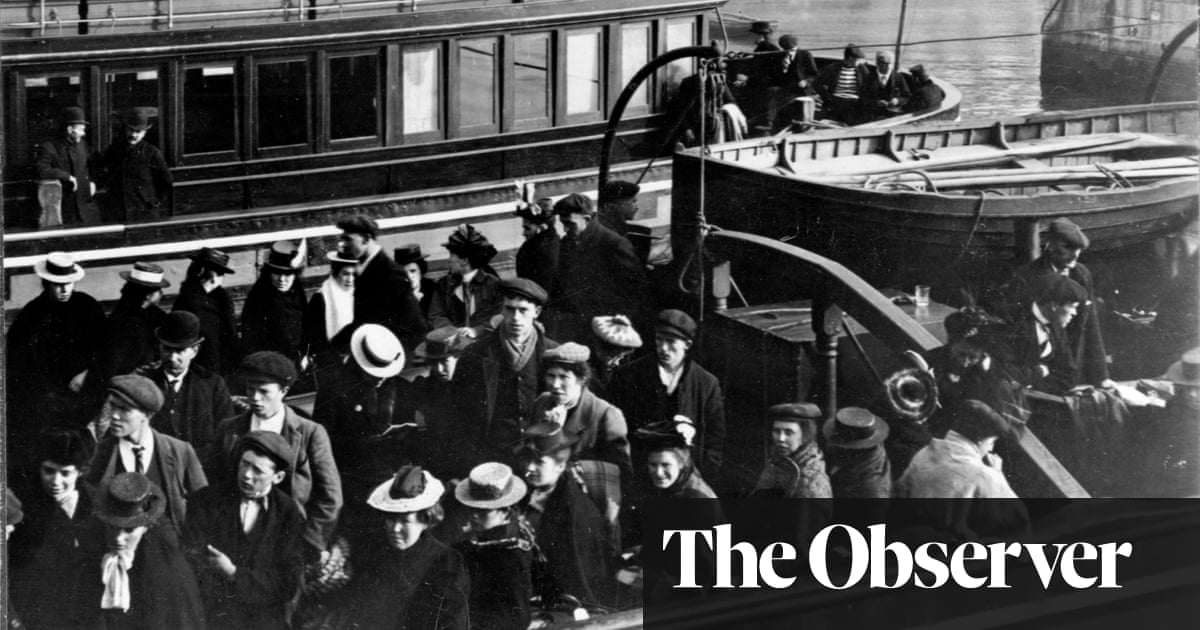
In the week that Ireland turns everything green and celebrates its diaspora, a new online archive has given voice to the human cost paid by generations of emigrants.
More than 7,000 letters from emigrants to North America spanning four centuries have been collected and digitised, giving poignant insight into the homesickness, tribulations, and occasional triumphs, of those who crossed the Atlantic.
They tell of Pennsylvania coalmines, Minnesota winters, Boston slums, and the desperate struggle to adapt and survive – and to make peace with the likelihood of never seeing home again.
Kerby Miller, a US historian, amassed the trove over nearly six decades by combing archives and private collections, and making public appeals for letters, memoirs and other documents in trunks, drawers and attics, yielding more than 150,000 pages spanning the late 1600s to the 20th century.
The University of Galway has placed the collection in a digital repository that is searchable and free to access, creating a new window on Irish, US and Canadian history in time for St Patrick’s Day.
On Sunday, the taoiseach, Leo Varadkar, is to present the US president, Joe Biden – who has called himself a “proud son” of Ireland – with a bowl of shamrocks at the White House, concluding a week of events in Washington and across the world that celebrate diaspora success stories.
The Galway project, called Imirce, illuminates darker parts of a mass migration that included the Great Famine of the 1840s and depopulated Ireland. “All the emigrants, whether middle class or from poor labouring backgrounds, had to adjust to a country that was in a much more advanced state of hypercapitalism,” said Miller.
“Life in America was just so much more competitive. There were a lot of people who metaphorically fell by the wayside and some who barely survived. And there were others who succeeded beyond their wildest dreams.”
The letters reveal struggles and heartache, said the historian. “A common theme is the longing for home and the sadness that they probably will never be able to return home. Another is the obligation to send money back, which often they can barely afford, and also to pay for the passage of younger brothers and sisters.”
Letters sent home – a key plot device in Colm Tóibín’s diaspora novel Brooklyn, later made into a film starring Saoirse Ronan – also showed hope and pride, said Miller. “Many immigrants were happy to be in America. They felt they had more opportunity to be independent – that’s a word they often used. For instance, owning their own farm or shop, not having to take their hats off in the presence of the landlord, or obey the wishes of a priest.”
One letter from New York to Cork in the 1930s details the author’s sex life.
Miller began collecting the material when he was a young scholar in the late 1960s and never stopped. He turned a doctoral dissertation into a book, Emigrants and Exiles: Ireland and the Irish Exodus to North America, that was nominated for a Pulitzer prize in 1986.
The University of Missouri emeritus professor donated his collection to the University of Galway on condition it be transcribed, digitised and added to, with continued appeals for more documents.
The letters dispel any myths that the Irish found America paved with gold, said Breandán Mac Suibhne, a University of Galway historian who is part of the team leading the project. “A lot of these people had very difficult lives. If some experienced the American dream, others experienced the American nightmare.”
Some letters made coded references to relatives back home, said Mac Suibhne. “They might say this is no country for a drunkard or someone who doesn’t want to work – a way of saying don’t send over uncle Johnny.” Mac Suibhne would like to extend the project to letters from England, Wales and Scotland.
Daniel Carey, a professor of English at the University of Galway, said the correspondence conveyed rich, myriad impressions of a new world. “It’s a much more subtle resource when you can hear people’s voices.”
One woman, writing from Philadelphia in 1836, gave a wary endorsement of two sons of family friends from Derry. “They are in genteel employment and promise to be graceful and sober citizens.”
During an era of anti-immigrant sentiment in the US and in Ireland, the letters were first-hand testimony of what drove people to uproot and seek new lives, said Carey. “It’s a reminder of their eagerness to work. They’re making a contribution as domestic servants and in demanding industries. It’s a record of people’s desire to get on.”
The picture caption below the main image accompanying this article was amended on 17 March 2024 to clarify that the Irish emigrants are pictured on a tender heading out to a ship bound for the US, not aboard the ship itself.












